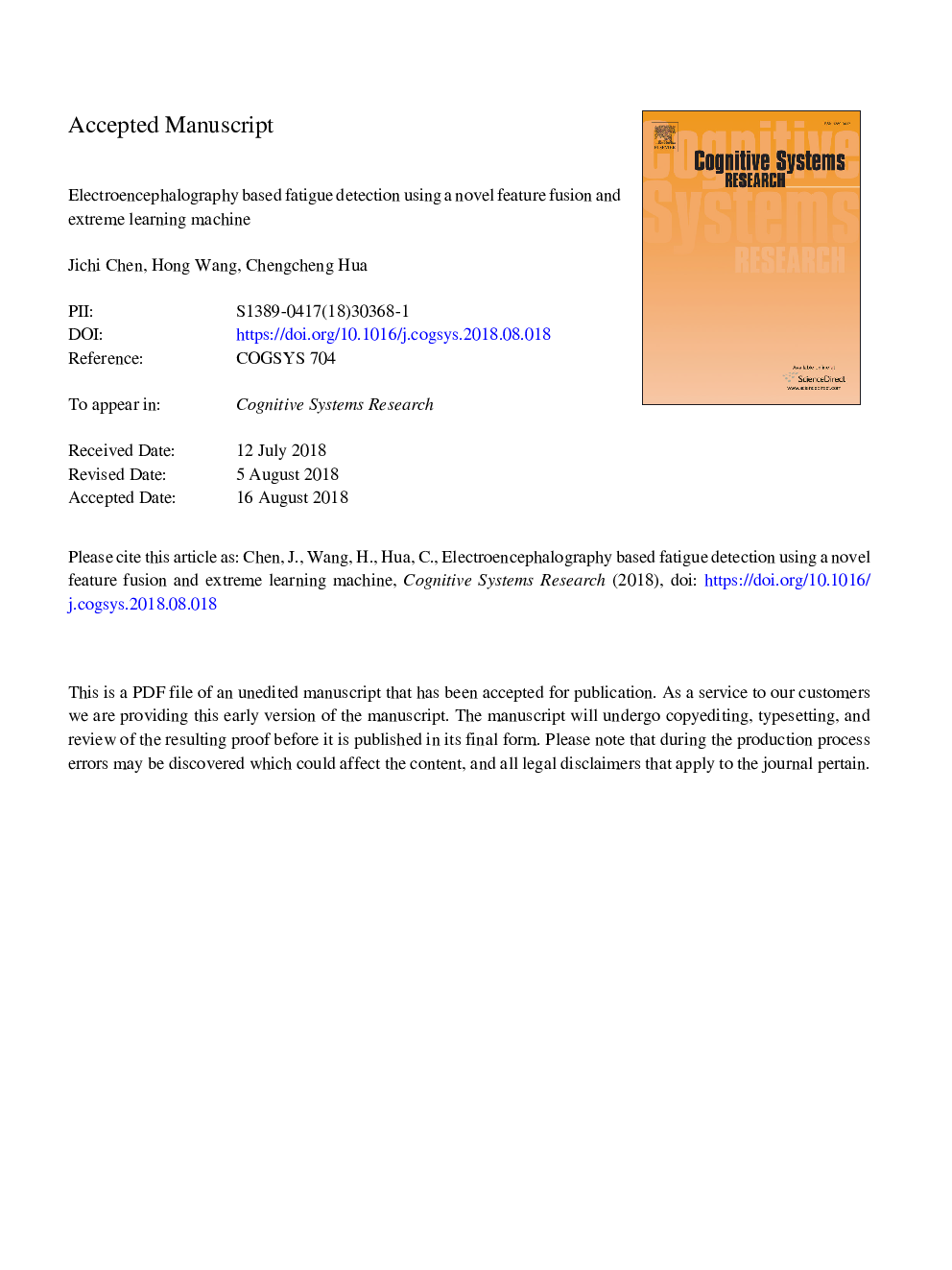| Article ID | Journal | Published Year | Pages | File Type |
|---|---|---|---|---|
| 11002241 | Cognitive Systems Research | 2018 | 22 Pages |
Abstract
The unsafe behaviors of operators in fatigue state not only lead to declines of work efficiency but also higher error rates and more injuries and even deaths. Automated fatigue detection using Electroencephalogram (EEG) due to helping us decline the occurrence probability of related accidents has gained more and more attention in recent years. Hence, designing a suitable feature extraction approach and choosing an efficient classification methodology are considered as the key to successful implementation. We first propose a new minimum spanning tree (MST) feature extraction approach on the basis of the phase coherence (PC) and a power spectrum density (PSD) method, respectively. Then to further improve the detection performance, we perform feature fusion (FBN-PSD-FF), where the functional brain network (FBN)-based feature characterizing the relationship between brain network organization and fatigue and PSD-based feature characterizing the relationship between power variation and fatigue. Furthermore, an automated fatigue detection system has been developed, which is integrated between the novel fusion feature (FBN-PSD-FF) and extreme learning machine (ELM). Finally, a driving simulation experiment is designed and conducted to demonstrate the proposed detection system, and the Karolinska Sleepiness Scale (KSS) and the Stanford Sleepiness Scale (SSS) are employed to validate the results. Experimental results indicate that the proposed method gives a sensitivity of 95.71%, a specificity of 94.29%, an accuracy of 95.00%, and a highest value of area under the receiver operating curve (AUC-ROCâ¯=â¯0.98). The ELM is employed for fatigue detection, reducing the time consuming greatly. Our proposed system can be a viable solution for detecting operators' fatigue and has great potential to reduce fatigue-related crashes in many circumstances such as navigation, driving, aviation, construction industry, etc.
Keywords
Related Topics
Physical Sciences and Engineering
Computer Science
Artificial Intelligence
Authors
Jichi Chen, Hong Wang, Chengcheng Hua,
